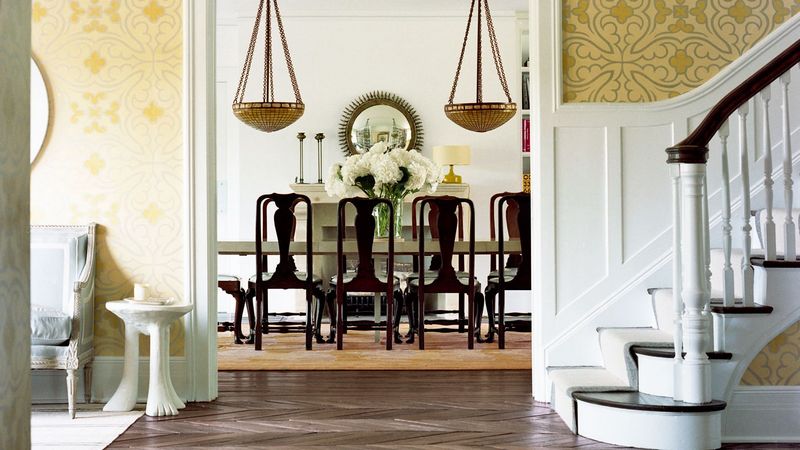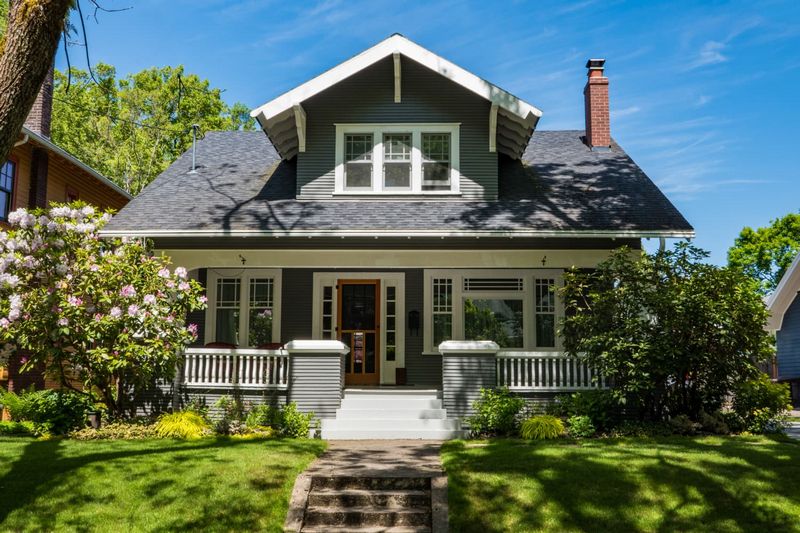
Renovating an Older Home
Upgrades are essential when it comes to renovating an older home. Whether it’s preserving the historical charm or remodeling for a more modern look, the choices you make can greatly impact the overall feel of your home renovation. By carefully planning your refurbishment and considering various improvement options, you can create a space that seamlessly blends the old with the new.
Start by evaluating what aspects of your older home you want to maintain and what areas could benefit from some much-needed updates. Are there any original features you want to preserve, such as architectural details or vintage fixtures? Or do you envision a complete transformation that embraces a more contemporary design? Understanding your goals will help guide your renovation decisions.
Prepare Your Space
Before starting any older home improvement project, it is essential to prepare your space. This step will ensure a smooth restoration process and help you achieve the desired upgrades for your home.
1. Assess your home:
Take a close look at your home and identify areas that need restoration or remodeling. Consider both the exterior and interior of your home, including the foundation, walls, roof, plumbing, electrical system, and HVAC. Make a list of necessary repairs and upgrades to prioritize them.
2. Research preservation techniques:
Older homes often have unique architectural features and historical significance. Research preservation techniques to restore and enhance these elements while maintaining the overall character of your home. Consider seeking advice from preservation experts or consulting resources on historic building materials and restoration techniques.
3. Plan your budget:
Home improvement projects can be costly, so it’s crucial to plan your budget in advance. Determine how much you can allocate for each aspect of the refurbishment project, including materials, labor, and unforeseen expenses. Consider consulting with professionals to get accurate cost estimates.
4. Hire professionals:
Depending on the complexity of the remodeling or restoration work, it may be necessary to hire professionals. Look for experienced contractors who specialize in older homes and have a track record of successful restoration projects. Obtain multiple quotes and compare their expertise and pricing before making a final decision.
5. Obtain necessary permits:
Before starting any major remodeling or restoration project, check with your local authorities about obtaining the required permits. Older homes often have specific regulations and preservation rules that need to be followed. Ensure you have all the necessary approvals to avoid any legal complications.
6. Protect your belongings:
Prior to the start of any renovation work, pack away and protect your belongings to prevent damage during the process. Cover furniture, remove fragile items, and create a designated storage area to keep your possessions safe during the home improvement project.
7. Communicate with your neighbors:
Renovations can cause disruptions, so it’s considerate to inform your neighbors about your home improvement plans. Let them know about the duration of the project, possible inconveniences, and noise levels. Maintaining good communication will help minimize any impact on your neighbors, fostering a positive relationship in the community.
8. Create a timeline:
Establishing a timeline is essential for staying organized during the home improvement process. Break down each task into smaller milestones and set realistic deadlines. This will help you track progress, ensure timely completion, and stay on budget.
9. Prepare for surprises:
When working with older homes, unexpected challenges may arise. Prepare yourself mentally and financially for potential surprises such as hidden damages, structural issues, or outdated wiring. Having a contingency plan will help you tackle these hurdles without derailing your renovation project.
Remember, preparing your space is a critical step in ensuring the success of your remodeling or restoration project. By taking the time to assess, plan, and set expectations, you can transform your older home into a modernized space while preserving its unique charm and character.
Clear Out Clutter
When it comes to renovating an older home, one of the first steps you should take is to clear out clutter. This is an essential part of the process and can make a huge difference in the overall preservation, restoration, and improvement of your space.
Older homes tend to accumulate a lot of unnecessary items over the years, making it difficult to see the true beauty of the space. By clearing out clutter, you can create a blank canvas for your remodeling project.
Start by going through each room and sorting items into three categories: keep, donate, and discard. Be ruthless in your decision-making process and only keep items that are truly sentimental or essential to your daily life.
Consider donating items that are in good condition but no longer serve a purpose for you. This not only helps to reduce clutter but also benefits others in need.
After decluttering, you can start to envision the potential of your older home. With a clear space, you can better plan for the refurbishment and renovations that will bring your space into the modern era.
Upgrades such as new flooring, updated fixtures, and fresh paint can completely transform the look and feel of your older home. By starting with a clean slate, you can better appreciate the improvements you make and the history that your home holds.
Remember, the key to a successful renovation is to start with a solid foundation. Clearing out clutter is an important step in the process and will set you up for a successful remodeling project that celebrates the charm and character of your older home while bringing it into the 21st century.
Assess Structural Integrity
Before embarking on any refurbishment or remodeling project in an older home, it is crucial to assess its structural integrity. This step is essential for both preservation and improvement purposes.
Structural issues can arise due to the natural aging process, wear and tear, or even previous botched renovation attempts. Identifying and addressing these issues early on can prevent further damage and ensure the safety and longevity of your home.
Here are some key steps to assess the structural integrity of an older home:
- Inspect the foundation: Check for cracks, settlement, or unevenness in the foundation. These issues can compromise the stability of the entire structure.
- Examine the walls and ceilings: Look for any signs of water damage, such as stains or bulges. This could indicate leaks or structural weaknesses.
- Assess the roof: Inspect the roof for missing or damaged shingles, sagging, or signs of water penetration. A sturdy and watertight roof is crucial for protecting the entire home.
- Check the structural framing: Examine the beams, joists, and columns for any signs of deterioration, damage, or insect infestation. These elements provide support and stability to the home.
- Inspect the plumbing and electrical systems: Make sure the plumbing and electrical systems are up to code and functioning properly. Faulty systems can pose safety hazards and lead to costly repairs.
Once you have identified any structural issues, it is important to consult with professionals, such as architects or structural engineers, to determine the best course of action. They can provide expert advice and recommend suitable upgrades and renovations to ensure the structural integrity of your older home.
By thoroughly assessing the structural integrity of your home, you can make informed decisions about the necessary renovations and improvements. This will not only modernize your space but also enhance its safety and value for years to come.
Plan Your Budget
When it comes to improving or refurbishing an older home, proper planning and budgeting are essential. Whether you’re looking to preserve the historical charm of your property or restore it to its former glory, having a clear budget will help you prioritize your upgrades and make informed decisions about where to invest your money.
Here are some steps to help you plan your budget for renovating your older home:
- Evaluate Your Home: Start by assessing the overall condition of your home and identifying areas that need the most attention. This will help you determine the scope of your project and estimate the associated costs.
- Set Priorities: Decide which aspects of your home are most important to you. Are you more interested in preserving the original character or upgrading the functionality? This will help you allocate your budget accordingly.
- Research Costs: Take the time to research the typical costs of materials, labor, and permits for the specific upgrades or renovations you have in mind. This will give you a realistic idea of how much you can expect to spend.
- Create a Spreadsheet: Use a spreadsheet to itemize and track your expenses. Include categories for each aspect of your renovation, such as flooring, plumbing, electrical, etc. This will help you stay organized and avoid overspending.
- Obtain Multiple Quotes: Reach out to contractors and suppliers to get multiple quotes for the work you plan to complete. This will allow you to compare prices and negotiate for the best deal.
- Consider Hidden Costs: Remember to account for potential hidden costs, such as structural issues, asbestos removal, or unexpected repairs. It’s always better to have some extra funds set aside for unforeseen expenses.
- Allocate Contingency: Set aside a contingency fund of around 10-15% of your total budget to cover any unexpected expenses that may arise during the renovation process.
- Track Your Spending: Regularly review your budget and track your spending to ensure you are staying within your limits. Adjust your plans if necessary to avoid overspending.
By carefully planning your budget, you can make the most of your older home remodeling project and achieve the desired results within your financial means. Remember, it’s not just about the dollars and cents – it’s about creating a space that you’ll love for years to come.
Update the Flooring
When it comes to preservation and upgrades in an older home, one important aspect to consider is the flooring. Refurbishment and restoration of the flooring can completely transform the look and feel of a home. Whether you want to bring back the original charm or modernize the space, updating the flooring is a great home improvement project.
Here are a few ideas to consider when updating the flooring in an older home:
- Hardwood Floors: Installing or refinishing hardwood floors can add elegance and value to your home. You can choose from a variety of wood types and finishes to match your desired style.
- Tile Flooring: Tile is a versatile option that offers durability and style. It can be used in various areas of the home, including the kitchen, bathroom, or even as a statement piece in the living room.
- Luxury Vinyl Plank: If you’re looking for a cost-effective and low-maintenance option, luxury vinyl plank flooring is a great choice. It comes in a wide range of styles and can mimic the look of hardwood or tile floors.
- Carpet Replacement: If you prefer a softer and warmer feel underfoot, replacing the old carpet with new carpeting can make a significant difference. Choose a carpet that suits your style and complements the overall aesthetic of your home.
Before starting any flooring renovation project, make sure to assess the condition of the existing flooring and consult with professionals to determine the best course of action.
Updating the flooring in an older home is a worthwhile investment that can enhance the overall appeal and value of your property. Whether you opt for classic hardwood, trendy tile, or comfortable carpet, a flooring renovation can bring new life to your space.
Remove Old Carpet
Is the carpet in your older home showing signs of wear and tear? Are you looking for a way to modernize your space and upgrade the flooring? Removing old carpet can be an important step in the refurbishment and restoration of your home.
Carpet removal is a common task during home remodeling or renovation projects. By removing old carpet, you can breathe new life into your space and create a fresh, modern look. The removal process involves pulling up the carpet, padding, and tack strips to reveal the original floor underneath.
Why should you consider removing old carpet?
- Modernize your space: Old carpet can make a home feel dated and worn out. By removing it, you can create an updated and contemporary look.
- Improved air quality: Old carpet can harbor dust, dirt, allergens, and even mold. Removing it can help improve air quality, especially if you or your family members have respiratory issues.
- Preserve and showcase original flooring: Older homes often have beautiful original flooring hidden beneath the carpet. By removing the carpet, you can restore and showcase these unique features.
How to remove old carpet?
- Gather your tools: You’ll need gloves, a utility knife, pliers, a pry bar, a dust mask, and a vacuum cleaner.
- Prepare the area: Clear out any furniture and vacuum the carpet to remove any loose dirt or debris.
- Start from a corner: Use the utility knife to cut a small section of the carpet near a corner. Grab the cut piece with pliers and pull it up to reveal the tack strip.
- Work in sections: Gradually pull up the carpet and padding, cutting it into manageable strips as you go. Be careful not to damage the floor underneath.
- Remove tack strips: Once the carpet is removed, use the pry bar to carefully remove the tack strips along the edges of the room.
- Clean and prepare the floor: Vacuum up any remaining debris and clean the floor using appropriate cleaning products.
- Consider new flooring options: Now that the carpet is gone, explore different flooring options like hardwood, laminate, or tile to give your home a fresh and modern look.
Removing old carpet can be a labor-intensive process, but the results are often well worth it. Whether you’re looking to modernize your space, improve air quality, or showcase original flooring, this simple upgrade can make a big difference in the overall look and feel of your home.
Install Hardwood Floors
Add Beauty and Value to Your Home.
Installing hardwood floors is a wonderful way to enhance the overall look and feel of your home. Whether you are remodeling, restoring, or simply making upgrades to an older property, hardwood floors are a great improvement that can instantly transform the space.
Preserve the Character of Your Older Home.
If you have an older home, preserving its historical charm and character is important. Hardwood floors can help you achieve this while adding a touch of elegance and sophistication. With the wide variety of styles and finishes available, you can find a hardwood floor that complements the unique features of your home.
Enjoy Long-lasting Durability.
Hardwood floors are known for their durability and longevity. When properly maintained, they can last for decades, making them a wise investment for your home. Additionally, hardwood floors are easy to clean and resist stains, which makes them an ideal choice for high-traffic areas.
Improve Indoor Air Quality.
Unlike carpets, hardwood floors do not trap allergens, dust, and pet dander. This makes them a healthier option, especially for individuals with respiratory issues or allergies. Installing hardwood floors can significantly improve the indoor air quality of your home.
Choose from a Wide Range of Options.
Hardwood floors come in a variety of species, colors, and finishes, allowing you to choose the perfect flooring for your home. Whether you prefer a classic oak, a trendy hickory, or an exotic Brazilian Cherry, there is a hardwood floor that suits your style and matches your existing decor.
Professional Installation for Stunning Results.
For the best results, it is recommended to hire a professional for the installation of hardwood floors. They have the expertise and experience to ensure a seamless and flawless installation. Trust the experts to handle your hardwood floor installation and enjoy a beautiful, long-lasting result.
Consider Tile or Laminate
If you’re looking to make an improvement in your older home, tile or laminate flooring can be a great solution. Whether you’re focusing on home restoration, renovation, or refurbishment, updating your floors can bring new life to your space.
Tile is a versatile option that comes in a variety of colors, patterns, and styles. It’s durable and easy to clean, making it a popular choice for high-traffic areas such as kitchens and bathrooms. Additionally, tile can help with the preservation of your home by providing a moisture-resistant and long-lasting surface.
Laminate flooring is another option to consider for your older home. It’s a cost-effective alternative to hardwood flooring and offers a wide range of designs and textures. Laminate is also easy to install and maintain, making it a popular choice for DIY home remodeling projects.
When choosing between tile or laminate, consider the overall aesthetic you’re aiming for and the specific needs of your home. Both options have their own benefits and can dramatically transform the look and feel of your space.
- Tile offers durability and moisture resistance.
- Laminate is cost-effective and easy to install.
Whether you’re updating your kitchen, bathroom, or any other area in your home, tile or laminate flooring can be a fantastic choice for modernizing your older space. Consult with a professional for further guidance and explore the various options available to find the perfect fit for your home remodeling project.
Refresh the Walls
When renovating an older home, one of the key areas to focus on is the walls. Upgrading the walls can completely transform the look and feel of your space. Whether you’re doing a full renovation or just a simple remodeling project, there are several options available to give your walls a fresh new look.
1. Preservation and Restoration: Before making any changes to the walls, it’s important to assess the current condition. Consider preserving any original features or historical elements that add character to your home. Restoration techniques can help bring back the original beauty of your walls while maintaining their historical value.

2. Refurbishment: If your walls are in good condition but need a little update, consider refurbishment options. This can include patching up any cracks or holes, repainting with modern colors, or applying wallpaper for a pop of pattern or texture.
3. Upgrades: For a more drastic change, consider upgrading your walls with modern materials. This can include installing drywall to replace old plaster walls, adding insulation for better energy efficiency, or installing paneling or wainscoting to add a touch of elegance or charm.
4. Creative Techniques: If you’re looking to add a unique touch to your walls, consider exploring creative techniques. This can include adding a faux finish or texture with techniques like sponging, ragging, or stenciling. You can also create an accent wall with a bold color or pattern to make a statement in the room.
5. Professional Assistance: When it comes to refreshing the walls of your older home, hiring a professional can help ensure a high-quality result. They can offer expert advice on the best materials and techniques to use and help bring your vision to life.
Remember: When renovating or remodeling an older home, it’s essential to strike a balance between preserving its historical charm and incorporating modern upgrades. Refreshing the walls is a great way to achieve this balance and create a space that feels both timeless and up-to-date.
Remove Outdated Wallpaper
When it comes to refurbishment projects in older homes, removing outdated wallpaper is often at the top of the list. Wallpaper that was popular decades ago may not fit with your modern design aesthetic, and removing it can instantly update the look of your home.
Home improvement experts recommend removing old wallpaper before starting any other restoration or remodeling projects. This is because wallpaper removal can be a messy and time-consuming process, and it’s best to tackle it first.
To remove outdated wallpaper, you will need a few tools and materials:
- Wallpaper scoring tool
- Wallpaper removal solution
- Large sponge
- Plastic drop cloths
- Putty knife or scraper
- Bucket of warm water
Start by scoring the wallpaper with the scoring tool. This will allow the removal solution to penetrate the wallpaper and loosen the adhesive. Next, apply the removal solution to the wallpaper using a large sponge. Let the solution sit for a few minutes to dissolve the adhesive.
Once the adhesive is softened, you can begin to peel off the wallpaper with your putty knife or scraper. Be careful not to damage the underlying wall surface. If the wallpaper is particularly stubborn, you may need to apply more removal solution and let it sit for longer before attempting to peel it off.
After removing all the wallpaper, be sure to clean the walls thoroughly with warm water and a sponge to remove any remaining adhesive residue. Allow the walls to dry completely before proceeding with any restoration or upgrade projects.
Removing outdated wallpaper is an essential step in the renovation of an older home. It can instantly modernize your space and provide a fresh canvas for your interior design ideas. Whether you plan to paint the walls or apply new wallpaper, starting with a clean and smooth surface is crucial for achieving professional-looking results.
Repair and Paint
Looking to restore your older home and give it a fresh new look? Our repair and paint services are just what you need. With years of experience in home improvement and renovation, we specialize in transforming older homes into modern living spaces.
Our team of experts will work closely with you to understand your vision and create a plan that suits your needs. From minor repairs to major remodeling, we offer a comprehensive range of services to help you bring your home back to life.
Here are some of the restoration and painting services we provide:
- Preservation: We understand the importance of preserving the unique character and charm of older homes. Our team will carefully assess the condition of your home and recommend the best preservation techniques to maintain its historical integrity.
- Repairs: We can fix any issues that may arise during the renovation process, including structural problems, plumbing and electrical repairs, and more. Our skilled craftsmen will ensure that your home is safe and functional.
- Painting: A fresh coat of paint can completely transform the look and feel of your home. We offer a wide range of paint colors and finishes to suit your style and preferences. Our team will take care of all the necessary preparations, including cleaning, priming, and masking, to ensure a flawless finish.
- Upgrades: If you’re looking to modernize your space, we can install new fixtures, appliances, and flooring. Our team will work with you to select the best materials and products that suit your budget and design goals.
Whether you’re planning a full-scale renovation or just want to freshen up your home, our repair and paint services can help you achieve the results you desire. Contact us today for a consultation and let us bring your vision to life.
Add Texture or Accent Walls
When it comes to the preservation and remodeling of older homes, adding texture or accent walls can be a great way to bring a modern touch to your space. This refurbishment technique not only enhances the visual appeal of your home but also adds depth and character to your living areas.
Why Choose Texture or Accent Walls?
- Revitalize the look of any room in your older home
- Add a contemporary and stylish touch to your living space
- Create a focal point that catches the eye of visitors
- Transform plain and boring walls into artistic masterpieces
- Complement your existing interior design theme
- Hide imperfections or damage in the original wall surface
Types of Texture or Accent Walls
There are various options available when it comes to adding texture or accent walls:
- Brick or Stone: Create a rustic and timeless ambiance with the use of real or faux brick or stone. This option is perfect for homes that want to incorporate a vintage or industrial look.
- Wood Paneling: Bring warmth and elegance to your home with wood paneling. Whether you opt for natural wood or engineered wood products, this type of wall covering adds a touch of sophistication.
- Wallpaper: Choose from a wide range of wallpapers that feature patterns or textures to instantly transform any room. With the advancements in technology, wallpaper options are now more durable and easier to apply.
- Textured Paint: Add depth and interest to your walls with textured paint. Whether you want a subtle texture or a bold statement, textured paint can be customized to suit your personal style.
Tips for Texture or Accent Wall Upgrades
Here are some tips to keep in mind when planning your texture or accent wall upgrades:
- Consider the overall aesthetics of your home and choose a texture or accent wall that complements your existing interior design.
- Take into account the natural lighting in the room. Lighter textures or accents can help brighten up darker spaces.
- When using real brick or stone, make sure to consult with a professional contractor to ensure proper installation and structural integrity.
- Experiment with different textures or accents in different rooms to create a unique and personalized look throughout your home.
- Opt for eco-friendly and sustainable materials whenever possible to minimize environmental impact.
By adding texture or accent walls to your older home, you can achieve a stunning restoration and bring new life to your living spaces. Whether you choose to incorporate brick, wood, wallpaper, or textured paint, these upgrades will modernize your home and make it feel refreshed and stylish.
Upgrade the Lighting
When renovating an older home, one of the key areas to focus on is upgrading the lighting. By making thoughtful changes to the lighting in your home, you can not only improve its visual appeal but also enhance its functionality and energy efficiency.
Here are some remodeling and upgrade ideas for lighting:
- Replace outdated fixtures: Start by replacing any outdated or worn-out light fixtures with modern, energy-efficient ones. This simple refurbishment can instantly give your home a fresh and contemporary look.
- Consider recessed lighting: If your older home has low ceilings or limited natural light, installing recessed lighting can help brighten up the space. Recessed lights provide a minimalist and sleek look while effectively illuminating different areas of your home.
- Add dimmer switches: Another way to modernize your space is by adding dimmer switches to your light fixtures. This allows you to adjust the lighting levels based on your needs and create different moods throughout your home.
- Opt for LED bulbs: LED bulbs are not only energy-efficient but also have a longer lifespan compared to traditional incandescent bulbs. By switching to LED bulbs, you can reduce your energy consumption and save money on your utility bills.
- Install under-cabinet lighting: Under-cabinet lighting is a great addition to kitchens, bathrooms, and other areas that require task lighting. It provides extra illumination for specific tasks while adding a touch of elegance to your space.
By considering these lighting upgrades during your home renovation or preservation project, you can improve the overall ambiance, functionality, and energy efficiency of your older home.
Replace Old Fixtures
As part of your renovation project for an older home, one of the key areas to focus on is replacing old fixtures. Updating these fixtures can greatly improve the overall look and functionality of your home.
Why Replace Old Fixtures?
- Modernization: Old fixtures can make your home appear outdated and can detract from the overall aesthetic you are trying to achieve with your renovation.
- Improved Efficiency: Older fixtures may not be energy-efficient, resulting in higher utility bills. Upgrading to new fixtures can help you save money in the long run.
- Functionality: Older fixtures may not work as effectively as new ones, causing inconvenience in your daily routine. Upgrading to new fixtures can ensure everything functions properly.
What Fixtures Should You Replace?
When considering which fixtures to replace, focus on the following areas:
- Lighting Fixtures: Update old, worn-out lighting fixtures with modern, energy-efficient options. This can instantly brighten up your space and create a more welcoming ambiance.
- Plumbing Fixtures: Replace old faucets, showerheads, and toilets with newer models. Not only will this improve the look of your bathroom and kitchen, but it can also help conserve water.
- Hardware: Consider replacing cabinet hardware, door handles, and drawer pulls to give your home a fresh, updated look.
Preserving the Character of Your Older Home
While updating fixtures is important, it’s also crucial to preserve the character and charm of your older home. Look for fixtures that blend well with the overall style and era of your home. Choose fixtures that complement the architectural details and materials used in your home’s construction.
Professional Restoration and Refurbishment
If you’re unsure about which fixtures to choose or how to properly install them in your older home, consider hiring a professional restoration and refurbishment expert. They can provide valuable guidance and ensure the renovation process goes smoothly.
By replacing old fixtures during your renovation, you can modernize your space while still preserving the unique character of your older home.
Add LED Bulbs
When it comes to upgrading and modernizing an older home, adding LED bulbs can make a significant difference in both the aesthetics and energy efficiency of your space.
The restoration, improvement, and renovation of older homes often involve replacing outdated lighting fixtures and bulbs. By opting for LED bulbs, you can not only bring a fresh and modern look to your home, but also reduce your energy consumption and lower your utility bills.
LED bulbs are known for their long lifespan, which is significantly longer than traditional incandescent bulbs. This means that once you install LED bulbs in your home, you won’t have to worry about changing them for years to come.
In addition to their longevity, LED bulbs are also eco-friendly. They consume less energy and produce less heat compared to other types of bulbs, making them a more sustainable choice for your home.
LED bulbs can also enhance the ambiance and functionality of your space. You can choose from a wide range of options, including different color temperatures and dimmable features, to create the perfect lighting atmosphere for each room in your home. Whether you want bright and crisp lighting for your kitchen or a warm and relaxing glow in your bedroom, LED bulbs can deliver.
Furthermore, LED bulbs are compatible with various fixtures and can be easily incorporated into your existing lighting setup. They are available in different shapes and sizes to fit your specific needs, whether you’re looking for bulbs for chandeliers, recessed lighting, or table lamps.
Investing in LED bulbs for your older home is a step towards both preservation and remodeling. Not only will they add a modern touch to your space, but they will also contribute to energy conservation and cost savings in the long run. So why wait? Upgrade your home with LED bulbs today!
Incorporate Natural Light
One important aspect of home improvement and restoration is the incorporation of natural light. Older homes often have smaller windows or limited access to natural light, which can make a space feel dark and cramped. By making upgrades to increase the amount of natural light in your home, you can transform the overall look and feel of the space.
There are several ways to incorporate natural light into your older home:
- Install larger windows: Replace smaller, outdated windows with larger ones to allow more natural light to enter the space. This will not only brighten up the room, but also create a more open and airy feel.
- Add skylights or light tubes: Installing skylights or light tubes in rooms with limited access to windows can help bring in additional natural light. These can be particularly effective in bathrooms, hallways, or other areas where it may be difficult to add traditional windows.
- Use light-colored paint and finishes: Light colors reflect more light, so using lighter tones for walls, ceilings, and floors can help maximize the impact of natural light. Opt for neutral shades or pastels to create a bright and inviting atmosphere.
- Remove obstacles: Take a look at the layout of your home and consider if there are any obstacles blocking the flow of natural light. This could include heavy curtains, furniture, or even landscaping outside of windows. By removing these obstacles, you can allow more light to filter into your space.
With these simple upgrades and techniques, you can effectively incorporate natural light into your older home. Not only will this improve the overall aesthetics of your space, but it will also create a more inviting and comfortable atmosphere.
Modernize the Kitchen
Remodeling an older kitchen can greatly improve the overall look and functionality of your home. Whether you’re looking for a complete restoration or just a minor renovation, upgrading your kitchen can make a big difference.
Here are some key improvements to consider:
- Update your appliances: Replace old, outdated appliances with modern, energy-efficient models. This will not only give your kitchen a fresh look but also save you money on your energy bills.
- Upgrade your countertops: Consider replacing old laminate or tile countertops with durable materials like granite or quartz. These materials are not only beautiful but also more resistant to scratches and stains.
- Install new cabinets: Replace old, worn-out cabinets with stylish, functional ones. Consider choosing cabinets with features like soft-close hinges and pull-out shelves for added convenience.
- Add lighting: Improve the ambiance of your kitchen by adding overhead and task lighting. Consider installing under-cabinet lighting to brighten up your workspace.
- Refresh the paint color: A fresh coat of paint can completely transform the look of your kitchen. Consider choosing light, neutral colors to create a bright and inviting space.
By investing in these upgrades, you can modernize your kitchen and enhance the overall value of your home. Whether you’re planning to sell or just want to enjoy a more functional and beautiful space, a kitchen renovation is a great place to start.
Question-answer:
What are some tips for renovating an older home?
When renovating an older home, it is important to start with a thorough inspection of the entire property. Look for any structural issues, such as cracks in the foundation or sagging floors, and address them first. Updating the wiring and plumbing is also crucial for safety and efficiency. Additionally, consider preserving any unique architectural features while modernizing the space with new finishes and fixtures.
How can I modernize an older home without losing its charm?
To modernize an older home while preserving its charm, you can start by focusing on the interior design. Choose a neutral color palette and incorporate modern furniture and artwork that complements the existing architectural features. Consider updating the kitchen and bathrooms with new cabinets, countertops, and fixtures that blend seamlessly with the overall style of the house. Lastly, don’t forget to update the lighting to create a more modern and inviting atmosphere.
What are some common challenges when renovating an older home?
Renovating an older home can come with its fair share of challenges. One common challenge is dealing with outdated wiring and plumbing systems, which may require a complete overhaul for safety and efficiency. Another challenge is working around the existing structural limitations, such as load-bearing walls or uneven floors. Additionally, it can be difficult to find materials that match the original design of the house, especially if it has unique architectural features.
How long does it usually take to renovate an older home?
The duration of an older home renovation project can vary depending on the scope of work and the size of the property. On average, a moderate renovation that includes updating the kitchen, bathrooms, flooring, painting, and minor structural repairs can take anywhere from three to six months. However, larger and more complex projects, such as a complete gut renovation or adding an extension, can take up to a year or more to complete.
Is it worth it to renovate an older home?
Renovating an older home can be a worthwhile investment for several reasons. Firstly, it allows you to customize the space to fit your needs and aesthetic preferences. Secondly, renovating an older home can potentially increase its market value, providing a good return on investment. Lastly, by updating the home’s systems and making it more energy-efficient, you can save money on utilities in the long run. However, it is important to carefully consider the renovation costs, as they can add up quickly, especially with an older home.
What are some tips for renovating an older home?
Renovating an older home can be a daunting task, but with some careful planning and consideration, it can also be a rewarding project. Here are some tips to help you modernize your space:
How can I update the look of my older home?
There are several ways you can update the look of your older home. One option is to repaint the walls in a modern color scheme. Another option is to update the flooring with new materials such as hardwood or laminate. Additionally, you can replace outdated fixtures and appliances with more modern ones to give your home a fresh look.







